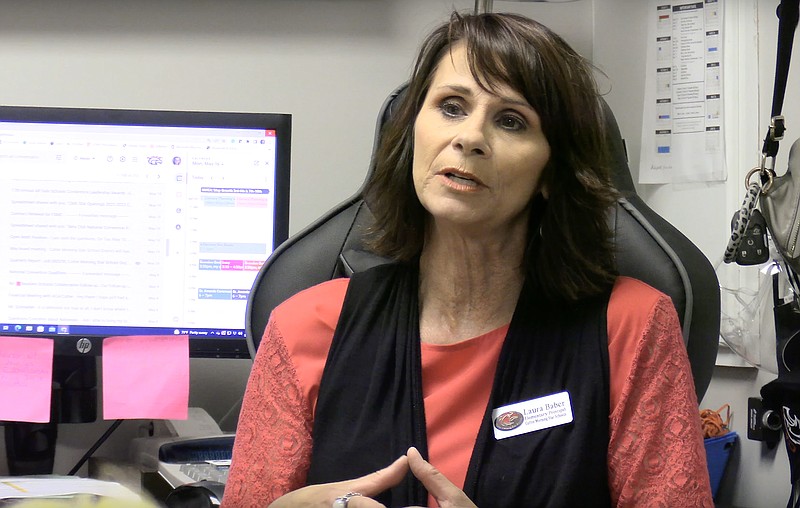Cutter Morning Star School District is implementing Opportunity Culture models in its elementary school this fall as part of the Arkansas Department of Education's statewide initiative to reach all students with quality, more-personalized teaching.
Superintendent Nancy Anderson said the district was approached by the department during the first year of its rollout and she visited the North Little Rock School District, which was one of the first schools to implement the program.
"I was really intrigued by the concept and the way it was working for them," she said. "Because basically, it keeps your strong teachers in the classroom. What typically happens in education is when you have a really good teacher, we end up pulling them out of the classroom and they become academic coaches or principals in some kind of leadership role, which really takes them away from that interaction with the students."
According to Public Impact education consultants, 55 districts and charter school organizations in 10 states use Opportunity Culture models in their schools to increase student learning growth and access to small-group tutoring. The models are also meant to help create career paths for teachers and paraprofessionals that let them advance without having to leave the classroom.
"We have some very, very gifted teachers and I don't want them out of the classroom ... they're already helping each other and helping other teachers, and they work collaboratively through their PLCs (professional learning communities)," she said.
She noted the importance of a strong teacher having direct contact with other students but yet not losing that direct instruction and contact with their current students. Instead of reaching 25 students, the teacher would have the opportunity to work with maybe 100 students.
Video not playing? Click here https://www.youtube.com/embed/5Uz-iJyhGUE
"Reaching different levels of kids and helping support those teachers -- but yet we're not taking (the teacher) out of the classroom," she said. "So that was what was very intriguing to me because, again, we have some very, very gifted teachers and when that happens in larger districts and most districts, what ends up happening is you pull them out. And, you know, we do have some that they're not interested in getting out of the classroom. That's where they'll be their entire career because they love teaching. But yet they're such a wealth of knowledge and their practice is so skilled, that we need them sharing that with other students and other faculty members."
She noted when she visited North Little Rock School District, she could not see how CMS could make it work due to the school's small size. Although the district is small, they figured out a way to make it work, she said, which is by starting small and incorporating it only at the elementary school and in one or two subject areas during the first year.
This fall it will be implemented in literacy and possibly math, Cutter Morning Star Elementary Principal Laura Baber said. Baber said they are looking implementing it with a partial release MCL, or multi-classroom leader.
"So the partial release means that that person will still have their classroom but then they will have some release time to support other teachers in a couple of grade levels and also work with other students than the ones tied to them," she said.
"So we're looking at lower elementary to begin because they teach all the subject areas, and that way the partial release MCL can have some common planning time possibly with the grade levels that they are supporting to support those teachers in their practice with curriculum -- with looking at data, with looking at interventions that students need and helping through that process, but then also working with other students than the ones that they are currently teacher of record with."
Baber said after starting small this year, they will continue adding more to eventually move up to the high school level as well, once they see how it works.
